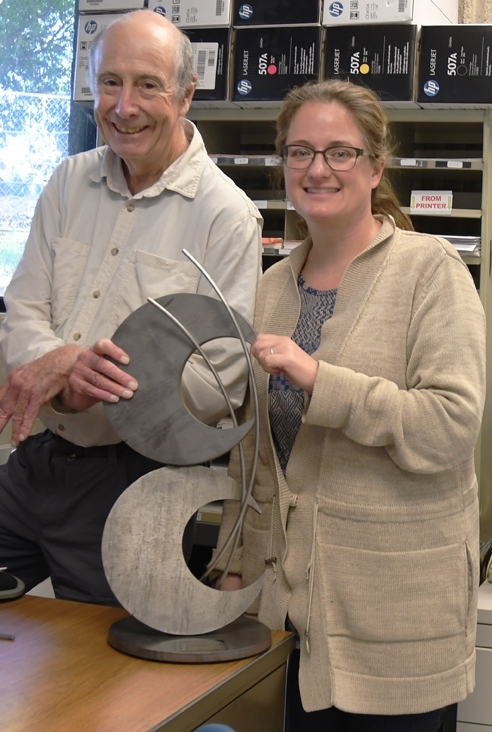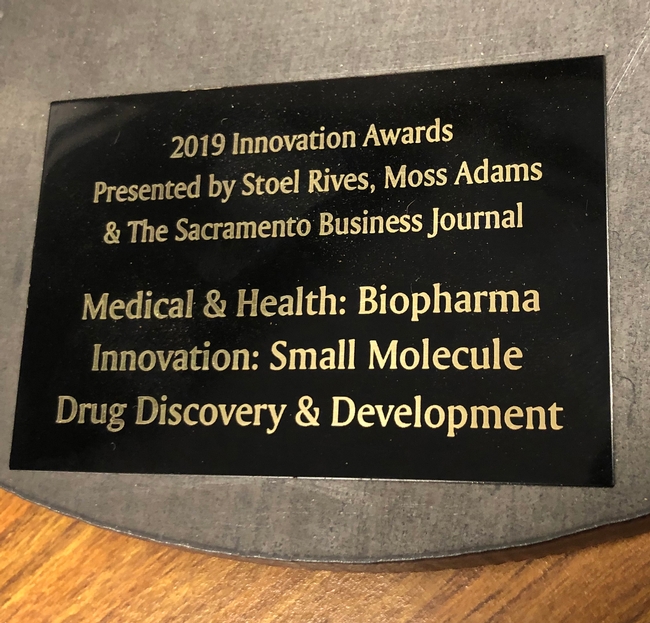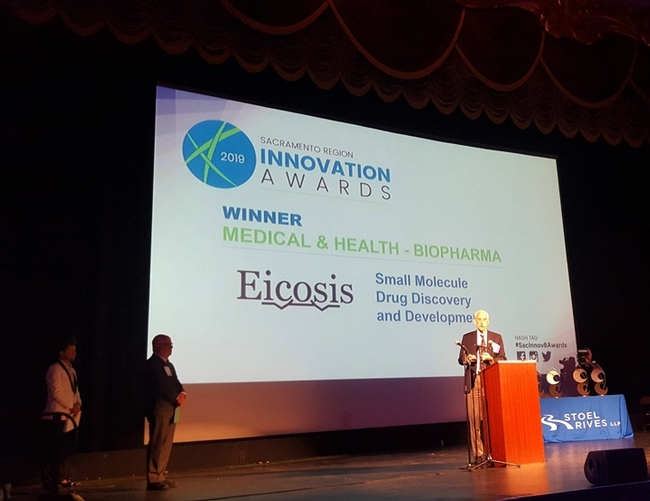
And now, the company he founded, EicOsis LLC, to develop a non-opiate drug to relieve inflammatory pain in companion animals and target chronic neuropathic pain in humans and horses, can add “Sacramento Region Innovator of the Year” to its list of accomplishments.
EicOsis won the award in the medical health/biopharmaceutical category of the annual Sacramento Region Innovation Awards Program. The program “recognizes the area's vibrant innovation community—from emerging to established companies—and their breakthrough creations,” according to sponsors Stoel Rives LLP, Moss Adams LLP and the Sacramento Business Journal.
“This project is an illustration of how fundamental science leads to real world applications, in this case addressing severe pain of humans and companion animals,” said Hammock, chief executive officer of EicOsis and a UC Davis faculty member who holds a joint appointment with the Department of Entomology and Nematology and the UC Davis Comprehensive Cancer Center. “Our success in translation has been due largely to support from a number of institutes of the National Institutes of Health and a small team of hard-working scientists.”
The ceremony, honoring the winners of the eight categories, took place Nov. 7 in the Crest Theatre, Sacramento. Judges scored the finalists on novelty, market need, economic or social impact and disruption. (See more information on YouTube (the EicOsis award presentation starts at 1:05.)
“It was an honor to be awarded the Sacramento Region Innovator of the Year in Medical Health and BioPharma,” said Cindy McReynolds, senior program manager of EicOsis and a UC Davis doctoral candidate studying pharmacology and toxicology. “The companies represented were inspiring, and it is great to be a part of the innovation going on in the Sacramento region.”
“Chronic pain is an enormous emotional and economic burden for more than 100 million people in the United States alone,” said Hammock, who co-founded EicOsis in December 2011 to alleviate pain in humans and companion animals. “The extreme and poorly treated pain that I observed as a medical officer working in a burn clinic in the Army, is a major driver for me to translate my research to help patients with severe pain.”

Phase 1 human clinical trials to test the drug candidate, EC5026, a first-in-class, small molecule that potently inhibitssEH, will begin Dec. 10 in Texas. The title: "A Single-Center, Double-Blind, Placebo-Controlled, Phase 1a Single Ascending Dose Study to Investigate the Safety, Tolerability, and Pharmacokinetics of Sequential Dose Regiments of Oral EC5026 in Healthy Male and Female Subjects." Eight will participate; six with the drug candidate and two with the placebo. The technology was discovered in the Hammock lab and UC Davis has licensed patents exclusively to EicOsis.
“EC5026 is a key regulatory enzyme involved in the metabolism of membrane fatty acids,” Hammock said. "It's a novel, non-opioid and oral therapy for neuropathic and inflammatory pain. Inhibition of sEH treats pain by stabilizing natural analgesic and anti-inflammatory mediators."
The project is unique in that “there have been very few truly new types of analgesic compounds that have reached the market in the past 50 years,” Hammock said.
“The sEH enzyme is involved in regulating the activity of powerful anti-inflammatory fatty acids called EETs that are present in all cells in humans and animals,” the scientists explained in their awards application. “EETs are anti-inflammatory, analgesic, anti-hypertensive, but they are short lived molecules that are normally eliminated within seconds. By inhibiting sEH, EET levels can be increased by 4x or more and maintained at high anti-inflammatory and analgesic levels for 24 hours or longer.”
“The sEH inhibitors are very potent molecules that are designed for once daily oral dosing. They can also be administered intravenously for acute pain (e.g. equine laminitis),” they wrote. “Preclinical safety studies show that sEH inhibitors are very safe with no visible signs of toxicity at doses more than 100x higher than the therapeutic dose levels. Unlike conventional analgesics, they do not produce sedation or cognitive dysfunction and they have been shown to have no addiction liability, no adverse cardiovascular effects, and no adverse effects on the gastrointestinal tract. They can be safely co-administered with existing analgesic medications.”
Approximately 50 million Americans (20 percent of the population) suffer from chronic pain, according to the Center for Disease Control and Prevention. The annual economic toll is $560 billion, encompassing direct medical expenses, lost productivity, and disability claims. Pain research is now one of the top priorities of the National Institutes of Health (NIH).
EicOsis advancement of EC5026 into clinical trials has been funded as part of the Blueprint Neurotherapeutics Network (BPN) of the NIH Blueprint for Neuroscience Research. The BPN is a collaboration of NIH Institutes and Centers that supports innovative research on the nervous system with the goal of developing new neurotherapeutic drugs.
EicOsis (pronounced eye-cosis), derives its name from eicosanoid, “the major backbone of chemical mediators in the arachidonate cascade,” said McReynolds. “It symbolizes the epoxide group in chemistry, which is key to the anti-inflammatory chemical mediators and where the biochemical target called soluble epoxide hydrolase works.”
Attached Images:
